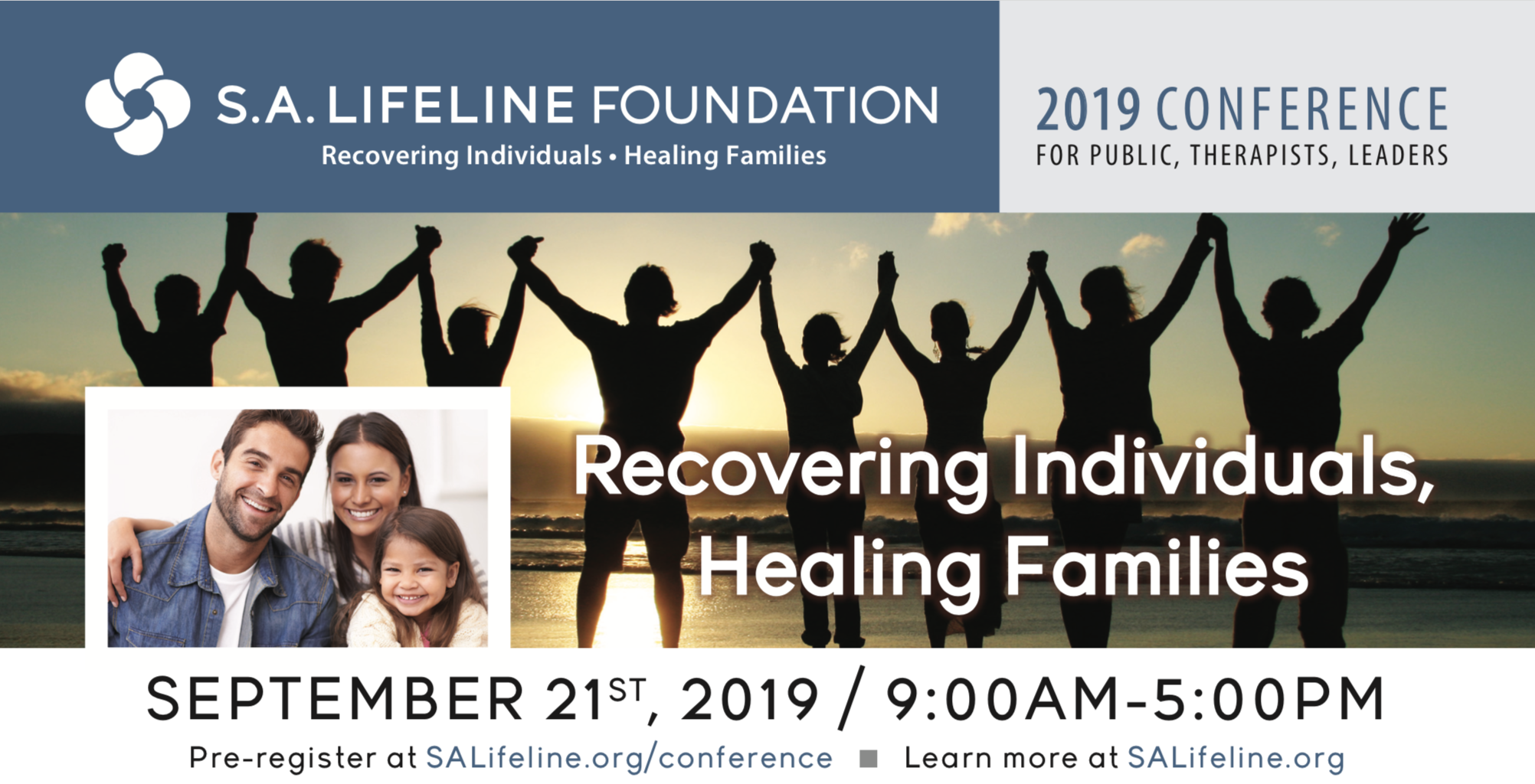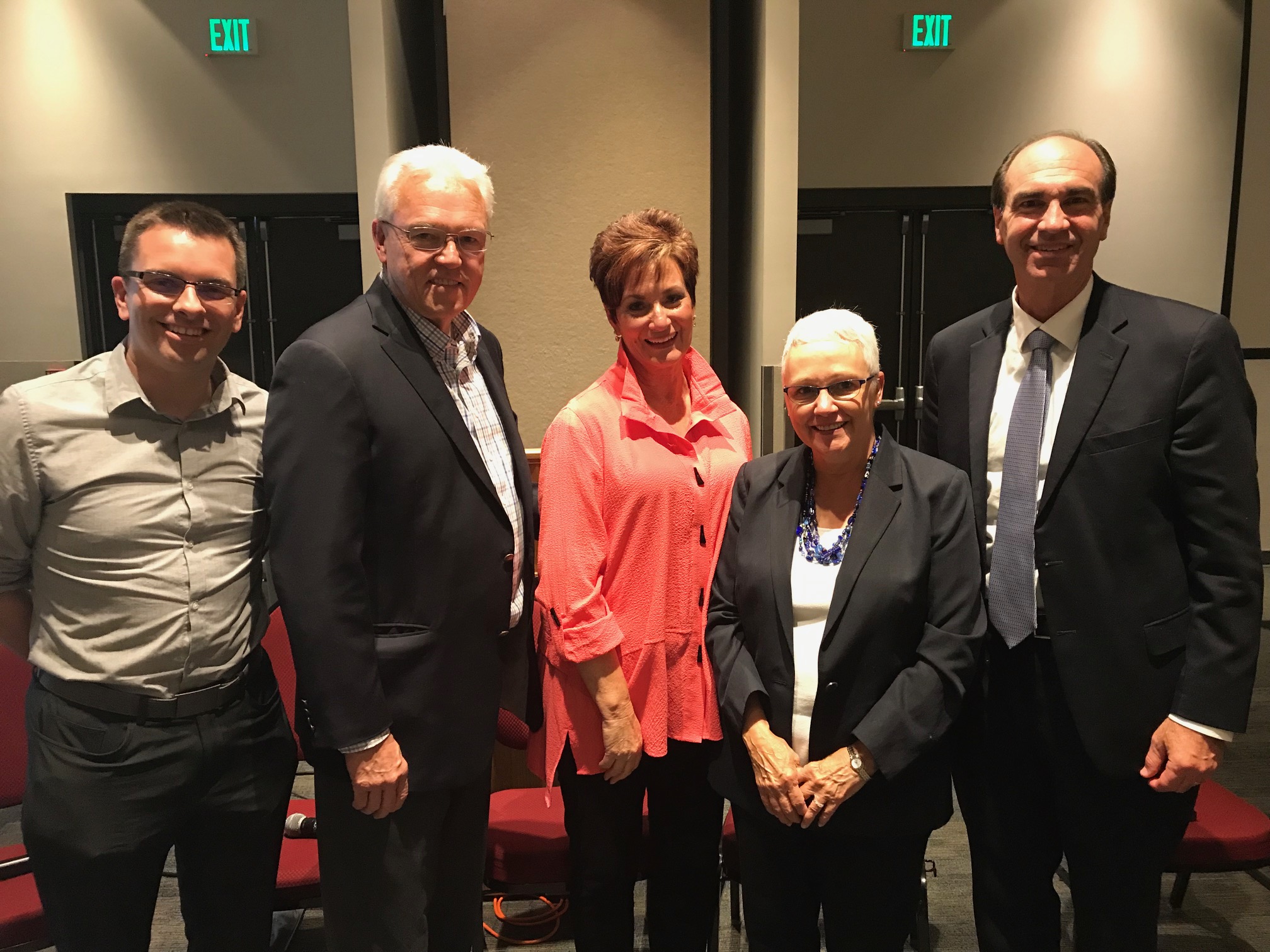This past Saturday, S.A. Lifeline welcomed over 200 people in-person and 60 online viewers to our annual Conference. The keynote speakers were top-notch, the best of the best. It was a day full of information, connection, and cathartic healing. We are so grateful for Dr. Hilton, Dr. Steffens, and Dr. Moore, and their willingness to connect with our community throughout the entire day.
If you are interested in getting the full video content of the Conference, it will be available on sal12step.org within the week for $20. Those who attended the Conference will have free lifetime access to the video recording and available slides.
 We are willing to bet that everyone left the Conference with some new recovery insights. We did. Here are 5 that might be new to you.
We are willing to bet that everyone left the Conference with some new recovery insights. We did. Here are 5 that might be new to you.
1. From Dr. Hilton’s address: “This is Addiction.”
Neuroplasticity is an important aspect of addiction and recovery. Just as addiction carves out unhealthy pathways in the brain, recovery can create new neural pathways. As these new connections grow deeper over time and with repetition, an individual’s entire mindset, even their very desires can change. Physiological changes in the brain represent scientific evidence of the deep change of heart we experience in 12-Step recovery.
As Patrick Carnes stated in In the Shadows of the Net, pg. 142: “Another characteristic of this growth stage (2-3 years in strong recovery) is a deep abhorrence of one’s old behavior. Once people in recovery have enough distance from their old problematic behaviors they often have extremely visceral reactions when they think about them. Many say they look back almost in disbelief at some of the things they’ve done. By the time recovery reaches the growth stage, it no longer involves false starts. Consciousness of sobriety and of richer relationships has brought the person to a new level of being. And it’s at this stage that people in recovery often talk about the compulsion of addictive behavior as a gift. They have experienced a depth of humanity that many people never achieve.”
2. From Recovery Breakout #1: Surrender and Connection: The Power Behind Trauma Recovery
Most of us working recovery agree with this comment left by a Conference participant: “I can ALWAYS learn more about surrender.”
One unique insight from this recovery break-out was brought to light by this participant share: “I never realized that by surrendering my fears, shame, resentment, my desire for certain outcomes, etc., I become more available for connection with God and others. My defects get in the way of that connection.”
Some more food for thought is to consider this basic definition of trauma: “trauma is what happens when our individual capacity for coping with something is exceeded or overrun.” (Kirk Voss, “The EmotionAlly Podcast”)
Through this perspective, it is eye-opening to realize that both addicts and betrayed partners will often benefit from a trauma perspective. As we reflect on our life stories, we frequently recognize unaddressed trauma as the impetus of addiction. This understanding can expand our empathy for one other, and give us more tools to assist in our healing.
3. From Dr. Steffens’ address: “This is Trauma.”
Dr. Steffens shared a wealth of information on betrayal trauma, including the history of this concept in the field. You may be unaware that up until the 1980’s, sexual addiction wasn’t even a thing…at least it wasn’t identified as such. The work of Patrick Carnes laid the foundation for our understanding of sexual addiction today. Barbara’s own research in the early 2000’s was ground-breaking in shifting the perspective on the betrayed partner from a co-dependent model to a trauma model. It has become clear that it is imperative to the partner’s healing to understand and address the trauma they have experienced before any other concerns can be addressed.
You may also be surprised (and validated) to hear that, according to Barbara, relational trauma is the WORST kind of trauma. While much attention is given to one-time traumatic events (like car accidents, a loved-one’s death, a house-fire, etc.)–and deservedly so–relational trauma is often overlooked and under-diagnosed. Healing from relational trauma is complicated by a number of factors, including the fact that the unsafe person who inflicted the trauma is often someone we are supposed to re-connect with and stay in close proximity (physically and emotionally) with. The chances of re-occurrence are often high, and we find ourselves living in what feels like a high-risk danger zone. This creates all sorts of havoc in our traumatized brains and bodies.
One of Barbara’s tips also helped me deepen my understanding of trauma and the way we approach recovery here at S.A.Lifeline. She said, “Don’t impose structures or tasks when someone is not yet ready.” This made me reflect on ways we can better welcome newcomers to the program, offering support and opportunities for positive action without putting pressure on them.
4. From Recovery Breakout #2: Why 12 Step? Understanding the Big Picture through the Recovery Puzzle
This presentation looked at “old mentalities” vs. “new mentalities” as one couple came to understand the bigger picture of recovery through implementing all aspects of the Recovery Puzzle.
Changed mentalities (old to new) include:
For the addict:
“I just need to go through the process to take care of this” changed to “Real recovery is a day to day, moment to moment process.”
“I just want to this behind me and move on” changed to “I can’t forget where I’ve been or I’ll go right back out there.”
“I just need to overcome this and get back to normal” changed to “I have to live a new normal every day–there is no arrival.”
“This little problem will go away when I get married” changed to “My addiction has been the way I’ve coped with life. I have to ‘start undoing my addiction from the inside out.'” (The White Book, p.50)
For the betrayed:
“My job is to forgive and forget” changed to “My job is to find and feel God at my center, one day at a time.”
“Don’t think about it–Just move on” changed to “Move through the pain–you have to feel it to heal it.”
“This will pass” changed to “I have to face what’s happening–I can’t ignore the problem.”
“Nobody’s perfect” changed to “I can hold boundaries around behaviors and attitudes that feel unsafe to me.”
“This will go away if I ______” changed to “I did not cause my husband’s behavior, I cannot fix my husband’s behavior; all I can do is focus on my own recovery.”
What old mentalities have led you to insanity (doing the same thing over and over again expecting different results?) How have your mentalities changed in recovery?
5. From Dr. Moore’s address: “This is Recovery.”
Have you ever heard of “escape velocity”?
Escape velocity is the speed at which an object must travel to break free of a planet or moon’s gravitational force and enter orbit. A spacecraft leaving the surface of Earth, for example, needs to be going about 11 kilometers (7 miles) per second, or over 40,000 kilometers per hour (25,000 miles per hour), to enter orbit.
Dr. Moore used this principle to explain the dynamics of early versus long-term recovery. In the beginning of recovery, typically the first 2-4 years, recovery may seem like a part-time job, eating up huge amounts of time and effort. However, once “escape velocity” is obtained, there is a less-strenuous orbit ahead in long-term recovery. Living in recovery one-day-at-a-time becomes much less difficult as this orbital stage is reached. This perspective gives hope to those of us who are still working so hard to reach that escape velocity–this intensity of pain and effort won’t last forever! It also rings true for those of us who continue to work one-day-at-a-time to remain solidly in orbit.
We are always amazed at Dr. Moore’s ability to share recovery information in fresh, humorous, and thought-provoking ways.

These insights represent just a few highlights from the 7-hour Conference–including a full-hour Q&A (our best yet!) with our phenomenal panelists: Dr. Don Hilton, Dr. Barbara Steffens, Dr. Adam Moore, and Steven and Rhyll Croshaw.
If you’d like to have it all, check out the video recording of the Conference available under Courses on sal12step.org by the end of the week (09/28).







It is indeed more hopeful to think that addiction recovery is a continual process that should be worked on constantly. A friend of mine confided to me months ago about how substance abuse has been ruining his life but he has no idea how to change his mentality and motivate himself to get help. I think I should try to step in and help him out in finding the right men’s addiction recovery house soon before he start relapsing.